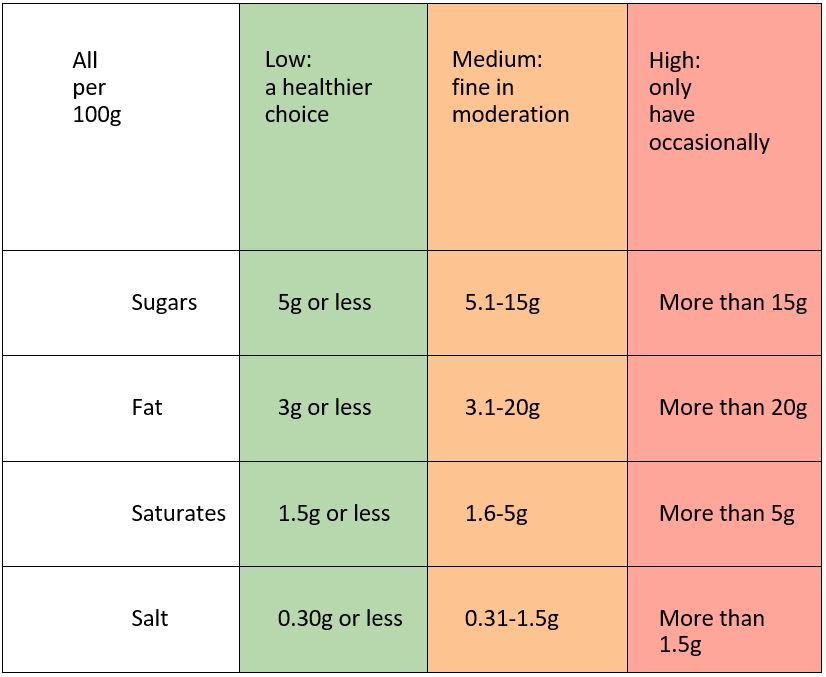Sustainable Weight Loss for People with a Stoma
15 January, 2021

Sophie Medlin BSc RD Consultant Colorectal Dietitian and Director of CityDietitians (citydietitians.co.uk) writes for Colostomy UK on aspects of diet and your stoma…
Losing weight can be difficult when you have a stoma. Many people gain unwanted weight following stoma surgery due to changes made to their diet in an effort to control their output. Sometimes, the changes to our body image can affect self esteem which can lead to more emotional eating (read Sophie’s article on emotional eating here).
A good way of assessing whether you might want to consider losing some weight is to use an assessment tool to check your Body Mass Index (BMI). The NHS has a great resource for this.
It is important to remember that BMI was designed to measure trends in health across large groups of people. That means that some people may be naturally lighter or heavier than the BMI scale recommends. If you’re not sure if your weight is healthy, chat to your doctor or stoma nurse.
As we all know. Being heavier than is healthy for you can put us at greater risk of heart problems and conditions such as diabetes. Particularly if we’re heavier because our diet is less healthy than it needs to be and we don’t do enough exercise.
You may be interested to know what your weight was prior to your stoma formation; your stoma nurse or consultant should have a record of this. Gaining weight following stoma formation can lead to stomal retraction (where the stoma sinks into a skin fold or dip in the abdomen) and hernias which can cause complications fitting devices and may require further surgery.
Unfortunately there isn’t an easy solution to losing weight. Despite what you may read in magazines or on the Internet, the only way of successfully managing your weight for good is making small changes to your lifestyle. Try to accommodate more physical activity and make healthier food choices. While fad diets may reduce your weight quicker, keeping it off is another matter. Sometimes it seems that all ‘healthy’ foods are high in fibre and can cause unwanted side effects. While high fibre foods are good for keeping you fuller longer, they are not the be all and end all of reducing your weight and, therefore, people with stomas should still be able to reduce their weight successfully without adverse consequences.
A balanced approach
Your overall diet should be well balanced and include a wide variety of foods from all food groups. Making small changes to all the food groups can help you to reduce your weight gradually and keep the weight off. You might choose to start by simply reducing your portion sizes (apart from vegetables) at meals.
Starchy foods such as bread, rice, pasta and potatoes
Many people with a stoma rely on starchy foods to regulate their stoma output. If that’s the case, then choose a starchy food with each meal, as they are filling and low in fat. But beware of adding butter or spread, creamy sauces or oils to starchy foods, as this will increase their calories. Remember, starchy foods which have been cooked, chilled and are then heated for eating, i.e. ready meals, pasta and rice salads or reheated food from previous meals, become ‘resistant starches’ making them difficult to digest and liable to cause bloating and increase stoma output.
Milk and dairy foods
Try to eat calcium rich foods such as dairy produce every day. However, some dairy foods can be high in fat, which can promote weight gain. Choose low fat dairy produce such as skimmed milk and lower fat cheeses and yoghurts to help reduce fat and calories in your diet to aid weight loss.
Foods and drinks high in fat and/or sugar
These are foods that we don’t really need nutritionally but that are an important part of celebrations or occasions. Things like crisps, biscuits and cakes. It is fine to include these occasionally but they become more of a problem when we have them everyday.
Meat, fish, eggs, beans
These are excellent sources of protein, which are essential for good health. Women should have two portions of protein rich foods per day, and men three. Again, choose lower fat options. Lean meat with all visible fat trimmed off will also help to control your weight.
Fruit and vegetables
These are excellent sources of vitamins and minerals and the vast majority are very low in calories and fat. Unfortunately the high fibre content of fruit and vegetables can affect stoma losses and make these foods more difficult to tolerate. Peeling fruit and vegetables and cooking them well can help with these problems. Try soups and smoothies to give your vegetable and fruit intake a boost. There is no reason why people living with a stoma can’t still have 5-a-day, we just need to make some sensible adjustments.
If fruit and vegetables do cause you a problem, you may find it difficult to choose healthy snacks. Here are some low fibre, low calorie snack ideas to keep you going in the afternoon:
– Cracker breads or rice cakes with bovril/marmite or extra light cream cheese
– Low fat yogurts
– Cup-a-soups
– 2-3 rich tea fingers
– Sugar free jelly
Fats
There is much written about healthy and unhealthy fats and their pros and cons. While it is important to be aware of the types of fats you consume, from a weight loss perspective it is good to remember that all fats gram for gram have the same amount of calories. This means that butter has the same amount of calories as olive oil. Therefore all fats should be consumed in lower quantities if you want to lose weight.
Portion size
Perhaps your diet and stoma output are in delicate balance and, although you do want to lose weight, you are worried about making any changes due to the risk of unwanted side effects. Or maybe you feel you are eating the right things and still not losing weight. Reducing your portion size is a fool proof way of reducing your calorie and fat intake, promoting weight loss. Here are some tips to getting portion in perspective:
– A portion of cheese is a small matchbox sized piece – around 30g.
– A portion of meat should be roughly the size of the palm of your hand – between 60-90g depending on your size and build.
– Check food labels, the calories and fat may be listed as per 100g, not per portion.
– Try a smaller plate – a side plate may help you to control your portions.
– Measure out fat and oil to keep the amount you use under control.
– Eat your food slowly and chew every mouthful for longer, this helps you feel fuller quicker.

Alcohol
Alcohol is very high in calories, which have no nutritional benefit. Be aware of the extra calories you could be consuming from alcoholic beverages.
Average calorie content of alcoholic drinks:
Bitter 1 pint = 170kcals
Cider 1 pint dry = 204kcals
Cider 1 pint sweet premium = 238kcals
Larger 1 pint = 482kcals
Red Wine 125ml (small) glass = 85kcals
Dry White Wine 125ml (small) glass = 82kcals
Medium White Wine 125ml (small) glass = 92kcals
Sweet White Wine 125ml (small) glass = 117kcals
Spirits per 35ml measure (not including a mixer) = 66kcals
Physical activity
Physical activity is very helpful in weight management and will burn calories and promote weight loss. It also has many other health benefits. If you are considering taking up a new exercise regime you should first discuss this with a member of your healthcare team.
Many GP surgeries now offer ‘exercise on prescription’ schemes, which give you the opportunity to increase your physical activity levels in a safe and controlled way.
Excellent sources of further information include:
• NHS: www.nhs.uk
• The British Heart Foundation: Tel: 020 7554 0000
Web: www.bhf.org.uk
• The Food Standards Agency: General enquiries – Helpline Tel: 020 7276 8829 Email: helpline@foodstandards.gsi.gov.uk Web: www.eatwell.gov.uk





